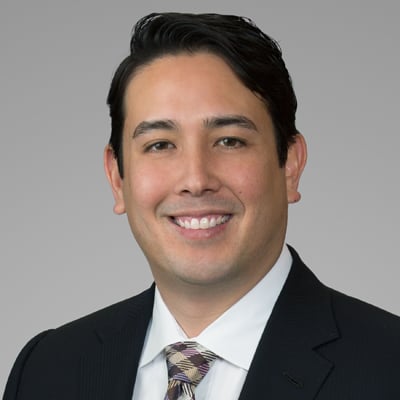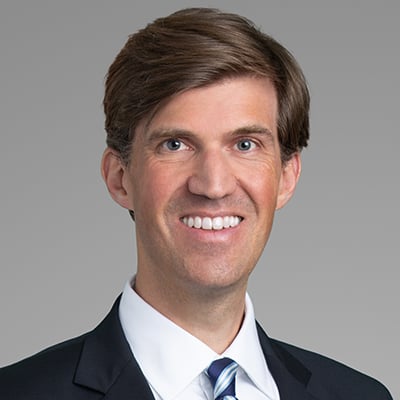New Voluntary EPA Program Gives New Owners of Upstream Oil and Gas Facilities More Time to Comply with Clean Air Act Emissions Requirements
In an effort to address excess emissions and Clean Air Act (“CAA”) noncompliance from vapor control systems at upstream oil and natural gas exploration and production facilities, the U.S. Environmental Protection Agency (“EPA”) has finalized its voluntary New Owner Audit Program (“Program”). The Program, finalized on March 29, 2019, is intended to encourage owners of newly acquired facilities to self-audit and correct deficiencies in exchange for the EPA’s assurance that it will waive civil penalties for facility noncompliance.
Purpose
According to the EPA, the intent of the voluntary Program is to provide environmental protection and certainty to owners of upstream exploration and production facilities in the oil and natural gas sector. Spurred by the “significant excess emissions and Clean Air Act noncompliance from vapor control systems” observed by the EPA and producing states, the Program’s intent is to incentivize facility owners to self-identify, self-report and self-correct violations. Importantly, the Program is separate from and does not change the EPA’s existing Audit Policy or New Owner Audit Policy. The Program does not absolve owners from potential criminal liability for violations, extend to issues that are not identified and disclosed in the audit, or preclude the EPA from taking enforcement action for violations that occur after the EPA makes a final determination.
Applicability
The Program is open to all new owners of upstream oil and gas exploration and production facilities who satisfy certain qualification criteria. If a new owner can meet the Program requirements, it enters into the New Owner Audit Program Agreement (“Agreement”) that specifies what actions, at a minimum, the owner must complete. Upon satisfactory completion of these activities, the EPA will absolve the owner of civil (but not criminal) liability for violations that were discovered, corrected and disclosed during the audit process.
Specifically, to qualify for the Program, the following requirements must be met:
- The entity seeking to participate must not have been responsible for environmental compliance at the facility (or facilities) prior to the date of acquisition;
- Neither the new owner nor the seller may have had the largest ownership share of the other entity prior to the transaction;
- The new owner and the seller must not have had a common corporate parent prior to the transaction; and
- The new owner must notify the EPA of its intent to enter the facility (or facilities) into the Program within nine months of the later of (i) the date of the acquisition, or (ii) the date the EPA finalized the Program (i.e., March 29, 2019).
Process
Once an owner is admitted to the Program, it begins consultation with the EPA to determine the scope of the audit and number of facilities covered. These considerations determine the schedule for completion and corrective actions that must be taken. In order to remain in compliance with the Program, the owner must fulfill all obligations of the Agreement. This includes completing not only the self-audit, violation disclosure and performance of corrective actions, but also complying with reporting and recordkeeping requirements. Pursuant to these provisions, the owner must file semiannual reports, a final report and maintain all records for two years after resolution of the Agreement. The EPA makes the final determination as to whether the owner has satisfied the terms of the Agreement and reserves the right to assess penalties for violations that were not satisfactorily disclosed and addressed pursuant to the Agreement.
Overview of Key Provisions
Key terms of the Agreement include:
- Violation Correction Schedule: The schedule for completing audits and corrective actions under the Program is based on the number of facilities and scope of the audit. The owner and the EPA consult on these matters at the beginning of the process.
- Corrective Actions: The Agreement defines three types of corrective actions for: (1) violations that are discovered by completing the certain requirements contained in Appendix B to the Agreement (“Appendix B Requirements”); (2) violations that are discovered outside of completing the Appendix B Requirements; and (3) violations that present an immediate and substantial endangerment to public health or welfare, or the environment. Under the first of these categories, the owner has 180 days from the discovery of the violation to take corrective actions to prevent the recurrence of the violation, while under the second, it has only 60 days to do so. Under certain circumstances, owners may request extensions of time for both of these types of violations, which may not be “unreasonably withheld” by the EPA. For the third category, violations that pose an immediate and substantial endangerment, the owner must notify the EPA within 24 hours of discovery of the violation and resolve it “as expeditiously as possible and promptly take action as may be necessary to protect public health, welfare, and the environment.”
- Appendix B Requirements: Appendix B outlines the Program’s Vapor Control System Engineering and Design Analysis, Field Survey and Corrective Action Guidelines. Considered the minimum standards with which owners must comply, Appendix B Requirements are intended to address all vapor sources, adequately size Vapor Control Systems ("VCS"), establish a process for conducting VCS surveys, ensure VCSs are properly functioning, and address required modifications in cases in which the VCS is not adequately designed and sized. However, for up to one year following the Agreement’s effective date, an owner may propose equivalent engineering, design and/or operational measures in lieu of those specified in Appendix B, so long as the proposed measures demonstrate that (i) vapor control systems will not exceed the applicable leak points during normal operations; (ii) vapor control systems achieve stated control efficiencies during normal operations; and (iii) compromised equipment is detected and repaired or replaced.
- Additions to Universe of Facilities Covered by Agreement: The standard Agreement only covers the universe of facilities agreed upon by the new owner and the EPA at the beginning of the process. However, an owner may subsequently add additional facilities to the Agreement by notifying the EPA in writing. Additionally, owners may transfer the Agreement to another entity in whole or in part by notifying the EPA at least 30 days prior to any proposed sale or transfer of ownership.
- Reporting Requirements: New owners enrolled in the Program must comply with the following reporting requirements:
(i) Audit documents: Within 60 days of the date on which the EPA signs the Agreement, companies must submit detailed audit protocols, checklists and the modeling guidelines and field survey standard operating procedures required by Appendix B. The EPA must then respond within 45 days of submission.
(ii) Semiannual reports: Companies must disclose all violations discovered during the audit in written disclosure reports on a semiannual basis, including a list of the facilities audited during the previous six-month period, a summary of the violations discovered, a summary of actions taken to correct the discovered violations and a list of any changes to the list of facilities covered under the agreement.
(iii) Final report: Within 60 days following the completion of the Program and all corrective actions, companies must submit a summary of compliance with regard to each disclosed violation.
- Recordkeeping Requirements: Companies must maintain records for at least two years after receiving a final determination from the EPA that the audit program was completed consistent with the Agreement. The EPA may request records at any time during this information-retention period, and companies may assert business confidentiality claims covering part or all of the EPA’s requested records, consistent with 40 C.F.R. § 2.203(b).
Program History and Industry Reaction
After the EPA initially announced its intention to develop the proposed Program in May 2018, the oil and gas industry provided comments and feedback on perceived flaws of the Program. Among the commenters were oil and gas trade associations, including the American Petroleum Institute and the Independent Petroleum Association of America, who commented that the Program was not posed to achieve joint agency and industry objectives, such as “managing environmental impacts in a sound and equitable manner” and that the Program requirements were so onerous that they might discourage participation. Stakeholders also commented that the proposed Program requirements were more stringent than appear to be required for penalty mitigation under the CAA, and that participating entities seeking penalty mitigation under the Program might be required to conduct analyses or corrective actions that do not appear to be based on any federal statutory or regulatory requirement. The EPA stated that the final Program finalized on March 29, 2019, reflects the agency’s efforts to refine Program requirements based on this feedback. For instance, in the proposed version of the Program, participating companies were to be given six months after acquisition to decide whether to participate in the Program and 60 days after the date of discovery to correct emissions issues. Under the final Program, however, the decision-making period was increased to nine months and the timeline for corrective action was increased to 180 days.
Takeaways
The Program reflects the EPA’s efforts to encourage self-compliance while balancing public and environmental considerations. Although the Program imposes new and additional requirements on owners that may make participation less desirable in certain circumstances, by providing owners with more time to comply with CAA regulations upon acquisition of new facilities, the Program may provide increased flexibility and certainty to upstream investors and operators.
Next Steps
The Program may help new owners achieve prompt and cost-effective CAA compliance with added certainty. As indicated by the EPA’s willingness to allow new owners to self-disclose and correct violations, the EPA intends for the Program to streamline mergers and acquisitions involving upstream assets, while protecting public health and the environment. However, the additional requirements that the Program imposes on owners may make compliance onerous. Investors and operators should consult with counsel to determine the legal, technical and cost implications of participation in the Program.
For additional questions regarding the implications of EPA’s new voluntary Program, please contact one of the authors listed below.
© 2019 KIRKLAND & ELLIS LLP. All rights reserved


